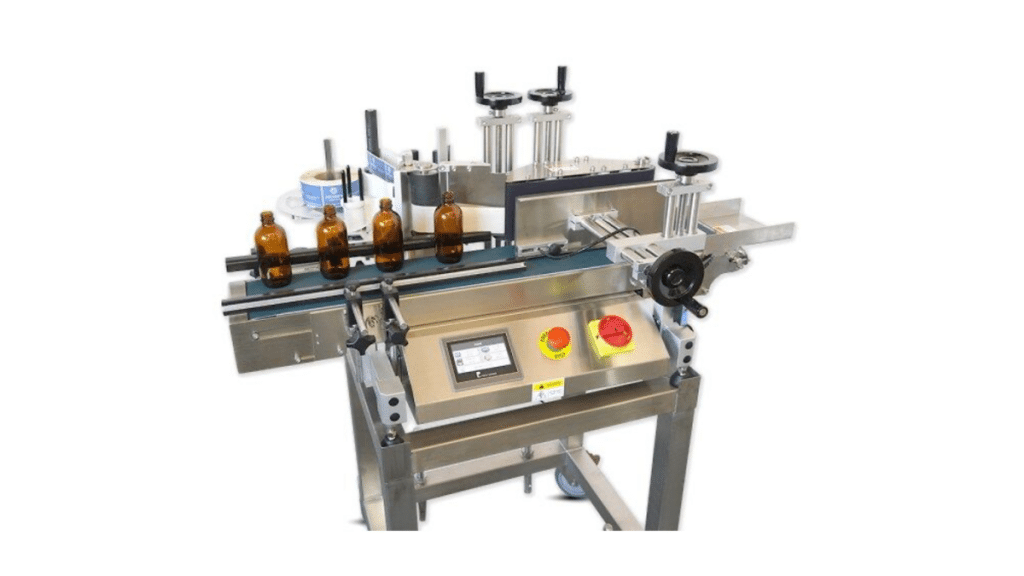Introduction
In the fast-paced world of manufacturing and packaging, efficiency is key to maintaining competitiveness. One of the most critical components of any packaging line is the labelling machine, which ensures that products are accurately and consistently labeled before reaching consumers. Whether in food and beverage, pharmaceuticals, cosmetics, or any other industry, labelling machines play a pivotal role in improving efficiency by reducing labor costs, increasing output speed, and enhancing accuracy. This article explores how labelling machines contribute to efficiency in packaging and why they are essential for businesses looking to optimize their production processes.
The Role of Labelling Machines in Packaging
Labelling machines are designed to automate the process of applying labels to products, containers, or packaging materials. Labels are essential for branding, product identification, legal compliance, and customer information. Without a proper labelling system, businesses risk mislabeling products, causing regulatory issues and potential recalls.
By integrating labelling machines into packaging lines, companies can ensure that their products are labeled consistently and professionally. This automation not only enhances the visual appeal of the product but also significantly reduces the chances of human error, thereby improving overall operational efficiency.
Key Ways Labelling Machines Enhance Efficiency
1. Speed and Productivity Enhancement
Manual labelling can be slow and inconsistent, especially in high-volume production environments. Labelling machines, on the other hand, can apply labels at a rapid pace—sometimes hundreds or thousands per hour—ensuring that production lines keep moving smoothly. This results in faster turnaround times and increased productivity.
Advanced labelling machines can handle multiple labeling tasks simultaneously, such as applying front and back labels or wrap-around labels, reducing the need for manual intervention and speeding up operations significantly.
2. Improved Accuracy and Consistency
One of the biggest challenges in manual labelling is ensuring uniformity and accuracy. A misplaced or wrinkled label can affect product presentation and branding. Labelling machines eliminate this issue by ensuring that each label is placed precisely in the correct position, providing a polished and professional look.
In addition, automated labelling systems come equipped with vision inspection technology to detect errors, ensuring that any misaligned labels are corrected before products leave the production line. This helps maintain quality control and reduces the risk of costly mistakes.
3. Reduced Labor Costs
By automating the labelling process, companies can reduce their dependency on manual labor, which can be costly and inefficient. Instead of requiring a team of workers to apply labels manually, a single labelling machine can perform the same task with greater speed and accuracy. This allows businesses to reallocate their workforce to other critical tasks, improving overall efficiency and cost-effectiveness.
4. Minimized Downtime and Waste
Labelling errors can lead to significant waste, as mislabeled products often need to be discarded or reworked. Labelling machines reduce waste by ensuring precise application, minimizing the number of rejected products.
Additionally, modern labelling machines come with automated adjustment features that allow for quick label changes, reducing downtime between production runs. This means that manufacturers can easily switch between different product lines without experiencing delays.
5. Enhanced Compliance and Traceability
Many industries, such as pharmaceuticals and food production, have strict regulations regarding labeling requirements. Incorrect or missing labels can lead to regulatory penalties and even product recalls. Labelling machines help companies comply with these regulations by ensuring that all necessary information—such as barcodes, expiration dates, and batch numbers—is correctly applied and legible.
Moreover, some advanced labelling systems come with track-and-trace capabilities, allowing businesses to monitor products throughout the supply chain, enhancing transparency and consumer trust.
6. Versatility for Various Packaging Needs
Labelling machines are designed to handle a wide range of packaging formats, including bottles, jars, boxes, pouches, and cans. Different types of labelling machines, such as pressure-sensitive labellers, sleeve labellers, and hot-melt glue labellers, cater to various industry needs. This versatility allows manufacturers to use a single labelling machine for multiple product lines, maximizing efficiency and reducing the need for additional equipment.
Choosing the Right Labelling Machine for Your Business
To fully capitalize on the efficiency benefits of labelling machines, businesses must select the right type of machine for their needs. Key factors to consider include:
- Production Volume: High-speed automatic labelling machines are ideal for large-scale production, while semi-automatic machines may suffice for smaller businesses.
- Type of Labels: Pressure-sensitive, shrink sleeve, or wet glue labels each require different labelling technologies.
- Packaging Material: The material of the product container (glass, plastic, metal, etc.) can influence the choice of labelling machine.
- Regulatory Requirements: Industries like pharmaceuticals require labelling machines with high precision and traceability features.
- Budget and ROI: While automated labelling machines require an initial investment, the long-term cost savings from reduced labor and increased efficiency often justify the expense.
Future Trends in Labelling Machines
With advancements in technology, labelling machines are becoming smarter and more efficient. Some emerging trends include:
- Integration with AI and IoT: Smart labelling machines can detect errors in real-time, self-adjust, and provide remote monitoring through IoT connectivity.
- Sustainable Labelling Solutions: As sustainability becomes a priority, manufacturers are adopting labelling machines that use eco-friendly adhesives and recyclable label materials.
- Customization and Personalization: With the rise of on-demand and short-run production, labelling machines are being designed to handle customized labels efficiently.
- Enhanced Automation: Future labelling machines will feature improved robotic arms, machine learning algorithms, and predictive maintenance capabilities to further boost efficiency.
Conclusion
Labelling machines are a crucial investment for businesses looking to enhance their packaging efficiency. By automating the labelling process, companies can increase production speed, improve accuracy, reduce costs, and ensure compliance with industry standards. As technology continues to advance, labelling machines will become even more efficient, helping manufacturers stay ahead in an increasingly competitive market.
Whether you’re a small business or a large-scale manufacturer, investing in a high-quality labelling machine can streamline your packaging operations and contribute to long-term success. If you haven’t yet considered upgrading your labelling process, now might be the perfect time to do so!
